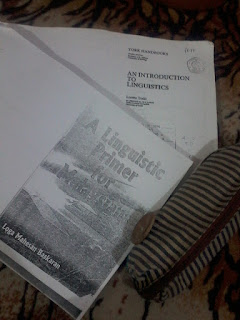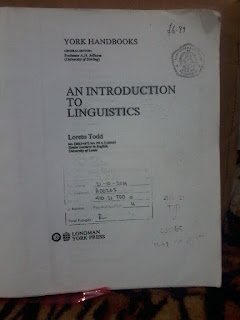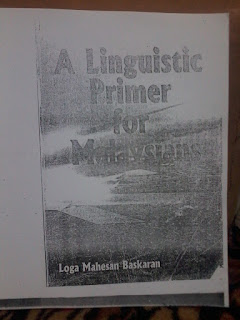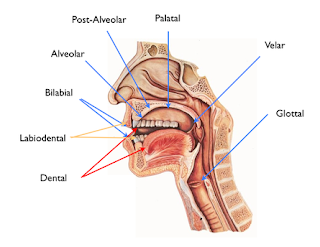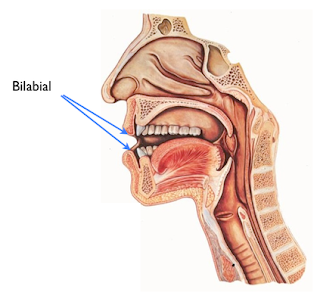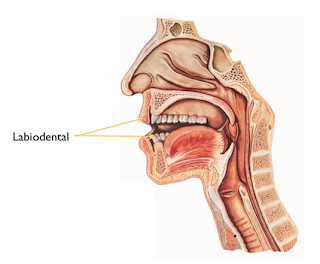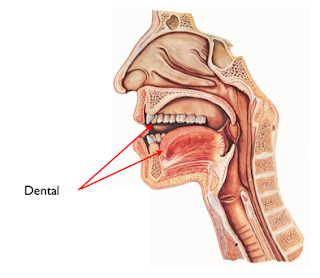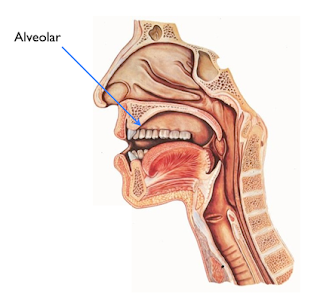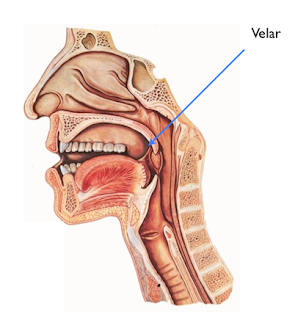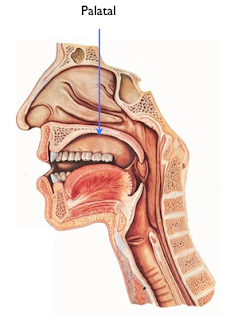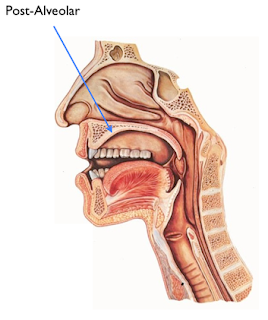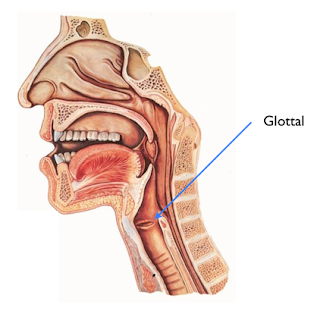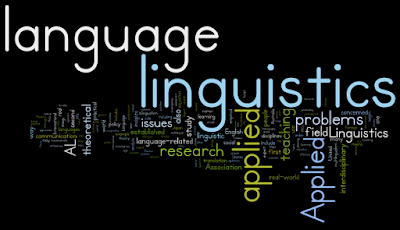What is an Introduction
to Linguistics?
Hi
readers,
I
come back with the new posting about Linguistics....
Do
you know what is Linguistics? if you don't know, we will learn together what Linguistics is.
OK, Let we start it!!!!
Introduction to Linguistics
Whatever else people do, when they come
together, whether they play, fight, make love-they are talking each other. we
communicate with other people using language, and we live in a world of
language. To understand our humanity, one must understand the nature of
language that make us human. According to the philosophy expressed in the myth
and religions of many peoples. Language is the source of human life and
power.
What is the meaning of language?
Languages are sets of signs.
Signs combine an exponent (a sequence of letters or sounds) with a meaning.
Grammars are ways to generate signs from more basic signs. Signs combine a form
and a meaning, and they are identical with neither their exponent nor with
their meaning.
So what is Linguistics?
Linguistics is the scientific
study of language, the medium that allows us to communicate and share our
ideas with others and including the sounds or sign, words, and grammar
rules. As a discipline, linguistics examines the structural components of
sound, form, and meaning, and the precise interplay between them.
Linguistics is also relevant to other
disciplines, such as psychology, philosophy, mathematics, computer science,
sociology and anthropology.
There are two part of Linguistics,
"Pure Linguistics" and "Applied Linguistics". I will
explain more detail in below :
v PURE LINGUISTICS
a) PHONETICS
Phonetics is the study of sounds. To understand the mechanics of human
languages one has to understand the physiology of the human body. Letters
represent sounds in a rather intricate way. It is the study of actual sounds of
human languages, their production and their perception. It is relevant to
linguistics for the simple reason that the sounds are the primary physical
manifestation of language.
Phonetics has three subfields or branches, are :
• The oldest branch, and also the one which is the most relevant in
foreign language teaching, is articulatory phonetics. This
examines the articulatory (vocal) organs and their role in the production of
speech sounds.
• The second branch is acoustic phonetics. This
deals with the physical properties of speech sounds as they travel through the
air in the form of sound waves.
• The third branch is called auditory phonetics,
which examines the way in which human beings perceive speech sounds through the
medium of the ear.
b) PHONOLOGY
Phonology describes the way sounds
function within a given language and operates at the level of sound systems and
abstract sound units.
c) MORPHOLOGY
Morphology is the study of
morphemes, which are the smallest significants units of grammar.
In morphology, there are Free and bound
morphemes :
· Free morphemes is
morphemes which can occur freely in their own.
· Bound morphemes is
morphems which can only occur as affixes. This morphemes are divided into two
types : (affixes) those like ‘dis-’ and ‘un-‘ and (prefixes) those like ‘-ly’
and ‘–ness’.
Derivational morphology :
- Commonly
occuring prefixes are ‘be-‘, ‘de-‘, ‘en-‘, ‘ex-‘, ‘hyper-‘, ‘pre-‘, ‘pro-‘,
‘re-‘, ‘sub-‘, ‘super-‘, and ‘trans-‘. Prefixes alterr meaning but donot
always changes the function of the word.
- Commonly
occuring suffixes always change the class of the word.
a. Word ending in the morphemes ‘-acy’, ‘-ation’,
‘-er/-or’, ‘-ess’, ‘-ity’, ‘-ment’, ‘-ness’, and ‘-ship’ tend to be nouns :
Democracy
actor
weakness
b. Words ending ‘-ise/ize’ tends to be verbs :
epitomise
hospitalise
c. Words ending ‘-able’, ‘-ed’, ‘-ful’, ‘-ical’,
‘-ive’, ‘-less’, ‘-like’, ‘-ous’, and ‘-y’ tends to be adjectives :
Enjoyable
polished
comical
Diminutives
helpless
indudstrious
d. Words which end in ‘-ly’ tend to be adverb :
Quickly
securely
d) LEXICOLOGY
Lexicology is the study of the word and whereas
the sudy of sounds or word segments. So
what is words ??
Words are only one of the
strands in language, a strand that has, in the past, been given, too much
attention and a strand that, because of our familiarity with it, we have often
failed to study as rigorously and as
objectively as other aspects of language.
e) SYNTAX
Syntax is the study of the structure of sentences.
a. The phrase
A phrase ia a group of words which
functions as a unit and with the exception of the verb phrase iself, does not
contain a finite verb. A finite verb is one that can take as its subject a
pronoun such as ‘I’, ‘we’, ‘he’, ‘she’,’it’, ‘they’.
There are
five commonly occuring types of phrase in English : noun phrases, adjectives
phrases, verb phrases, adverb phrases, and preposition phrases.
b. The clause
The clause is a group of words which
contains a finite verb but which cannot occur in isolation, that is, a clause
constitutes only part of a sentences.
In complex sentences, we have at least two clauses :
- A main clause
- Dependent clause/ subordinate
c. The sentences
each sentences is an independent linguistic
form, not include by virtue of any grammatical construction in any larger
linguistic form.
f) SEMANTICS
Semantics is the study of meaning in
language.
Ñ Polysemy :
polysemy is the word that has ‘many meanings’ or ‘multiple meanings’ that
followed by the most closely related meanings and with metaphorical extensions
coming last.
Ñ Synonymy :
synonymy is the word that ‘having the same meanings’ but in another definition,
synonymy is aways partial, never complete.
Ñ Antonymy : antonymy
is the general term applied to the sense relation involving oppositeness of
meaning.
Ñ Idioms : an idioms
is a group of words whose meaning cannot be explained in terms of the habitual
meanings of the words that make up the piece of language.
Ñ Hyponymy :
hyponymy is related to complementarity and incompatibility. Whereas the
relationship of implicit denial is called incompability, the relationship of
implicit inclusion is hyponymy.
v APPLIED LINGUISTICS
Language is used in all over the world. For
example, travellers have always known that communication depends on the ability
to modify language use. Sometimes the modifications required are relatively
slight, as when they wants to get
directions.
Recently, the insights
gained in sociolinguistics and psycholinguistics have been applied to language
teaching and learning. Many language is used
for anything like computer linguistics,stylistics and another language
in any part of life. Its always develope on human life.
Source :
Introduction to Linguistics. Loretto todd.1987. Longman Singapore Publisher..
Introduction to English Linguistics. A Companion to the Seminar.László Varga. PDF
An introduction to Language.Victoria
Fromkin, Robert Rodman, Nina Hyams. PDF
I think that's all about Linguistics that I can share,, thanks for visit my blog :)



